The capital of the Indian state of Kerala is the city of Thiruvananthapuram, which is also known as Trivandrum. It is on the country’s southwestern coast and has a mix of history, culture, natural beauty, and modern conveniences. The capital of Kerala, Thiruvananthapuram, is a beautiful, green city that is spread out over seven hills. It is full of history and culture. It is in the very south of the state, and the warm waves of the Arabian Sea wash up on its shores. This is one of the best towns in the country because time moves through it with grace and the day unfolds in a way that has always been done. Sri Padmanabhaswamy Temple is in the heart of the capital. It is dedicated to Lord Vishnu, who sleeps on the snake Anantha and after whom the city is named. The city was once called Trivandrum, but in 1991, its original name was brought back.
A Quick Look at the Past of Thiruvananthapuram
Thiruvananthapuram has been around since the beginning of time. People say that the old kingdom that was here, which is now called Poovar and was called Ophir, traded with Solomon’s kingdom and sent spices, ivory, and sandalwood there. The Ay Dynasty, which had its roots in what is now Tamil Nadu, ruled it. They were defeated by the kings of the nearby kingdom of Kollam, who for many centuries ruled Thiruvananthapuram. In turn, they were defeated in the 18th century by Marthanda Varman of the House of Travancore. He moved the capital of his kingdom to Thiruvananthapuram. During this time, when Maharaja Swathi Thirunal was in charge, the city was at its best. It was a centre of art and culture. After India got its independence and Kerala became a state, Thiruvananthapuram was chosen as the state’s capital.
Where Thiruvananthapuram is located
Thiruvananthapuram is on the western coast of India, near the southern tip, at 8.5° N and 76.9° E. The Arabian Sea is on one side of the city, and the Western Ghats are on the other. The city is surrounded by the water from the rivers Karamanna and Killi. The landscape of the city is made up of a number of low hills. The Geological Survey of India says that it is in an area that has a slight risk of earthquakes. The city is 10 m (30 ft) above sea level. Since it is in the tropics, it has a lot of green plants.
Thiruvananthapuram's weather
The city’s weather is warm to hot all year long, with temperatures between 15° C and 39° C. The city has summer from March to May, rainy season from June to September, and winter from October to February. Thiruvananthapuram is the first city in India where the monsoons begin. From June to August, the south-west monsoons bring heavy rain to the city. During October and November, it also gets the north-east monsoons. The average amount of rain here each year is 1,500 mm. In the hills near the city, winter can be felt. The temperature of the city is somewhere between that of a tropical savannah and a tropical monsoon. In the summer, the temperature ranges from 17° C to 34° C, and in the winter, it goes from 15° C to 31° C.
Tourism in Thiruvananthapuram
Like the rest of Kerala, Thiruvananthapuram has seen a rise in the number of tourists.
Most popular things to see and do in Thiruvananthapuram
Sree Padmanabha Swamy Temple
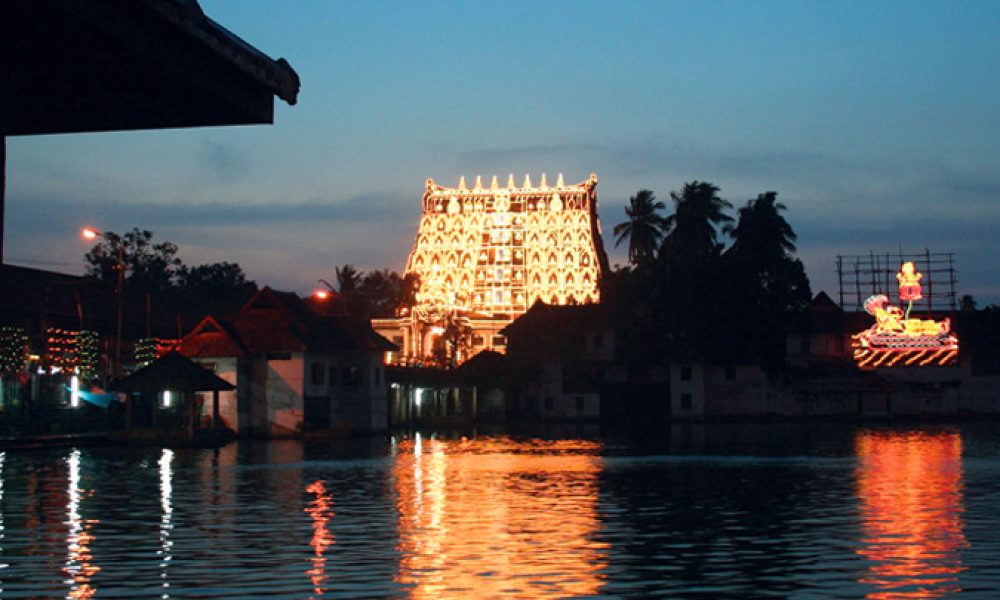
The Sree Padmanabha Swamy Temple, dedicated to Lord Vishnu, is located inside the East Fort in Thiruvananthapuram, Kerala’s capital. This temple combines Kerala and Dravidian forms. It’s considered the world’s richest temple.
8th-century Sree Padmanabhaswamy Temple. One of India’s 108 Vishnu temples (Divya Desams). Tamil Azhvars (saints) describes Lord Vishnu’s holiest abodes as Divya Desams. This temple worships Lord Vishnu resting on Anantha, the veiled Serpent.
The current Sree Padmanabhaswamy Temple was renovated by Travancore ruler Marthanda Varma. Marthanda Varma instituted Murajapam and Bhadra Deepam festivities at the shrine. Every six years, the temple performs murajapam, which signifies continual prayer.
Marthanda Varma gave Travancore to Padmanabha in 1750. Marthanda Varma swore that the royal dynasty would rule the state for the Lord and that he and his descendants would serve as Padmanabha Dasa. Padmanabha Dasa has prefaced every Travancore king since then. Padmanabhaswamy received Travancore as Thripadidanam.
Thiruvananthapuram, Kerala’s capital, is named after the Sree Padmanabhaswamy Temple’s Anantha, who reclines on the Serpent Anantha. Thiruvananthapuram means Sree Anantha Padmanabhaswamy’s Land.
Sree Padmanabhaswamy Temple is believed to be one of the seven Parasurama Kshetras. Skanda and Padma Puranas mention the temple. Padma Theertham—”lotus spring”—is near the shrine.
Architectural Aesthetics
Stone and bronze craftsmanship distinguishes temple architecture. Paintings and murals decorate the temple. The life-size images of Lord Vishnu in the reclining position, Narasimha Swamy (half-lion, half-man), Ganapati, and Gaja Lakshmi are among them. The temple contains a gold-plated copper-covered 80-foot dhwaja stamba (flag post).
Bali Peeda Mandapam and Mukha Mandapam are interesting structures at the temple. These halls have exquisite Hindu deity carvings. The Navagraha Mandapa exhibits the nine planets on its ceiling.
The Corridor
A wide passage with 365 and one-quarter granite-stone pillars with magnificent sculptures leads towards the sanctum sanctorum from the east. The temple’s annual ten-day festival in the Malayalam months of Meenam and Thulam features Kathakali performances in the nataka sala (literally drama hall) under the main entrance on the eastern side.
Neyyar wildlife sanctuary
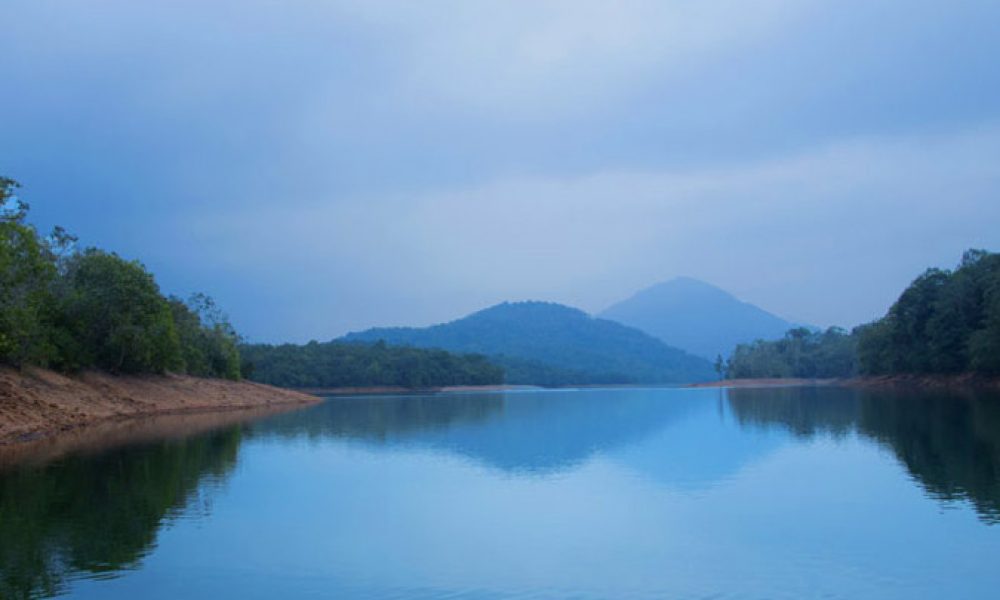
The Neyyar Wildlife Sanctuary is 12,000 hectares of wild vegetation about 32 kilometres from Thiruvananthapuram. It is a rare chance to see plants and animals, and there are many ways to hike there. People like to climb the 1868-meter-high Agasthyamala Peak, which is also a popular place to have a lunch. The fragile slopes and flat fields make for a beautiful sight that you should not miss at any cost.
The nearby Neyyar Dam is also well-known for many reasons. One of the best things about it is that it is a beautiful place to have a lunch with family, friends, or by yourself. It has a beautiful Watch Tower, a Deer Park, a Lion Safari Park, and a Crocodile Rehabilitation and Research Centre. The dam is part of the Neyyar Wildlife Sanctuary, which is home to more than 100 animal species, such as the Asian Elephant, tiger, leopard, Slender Loris, and many snakes and amphibians, such as the King Cobra, Travancore Tortoise, etc. At the pond, you can rent a boat and get a beautiful view of the surrounding area.
Napier museum
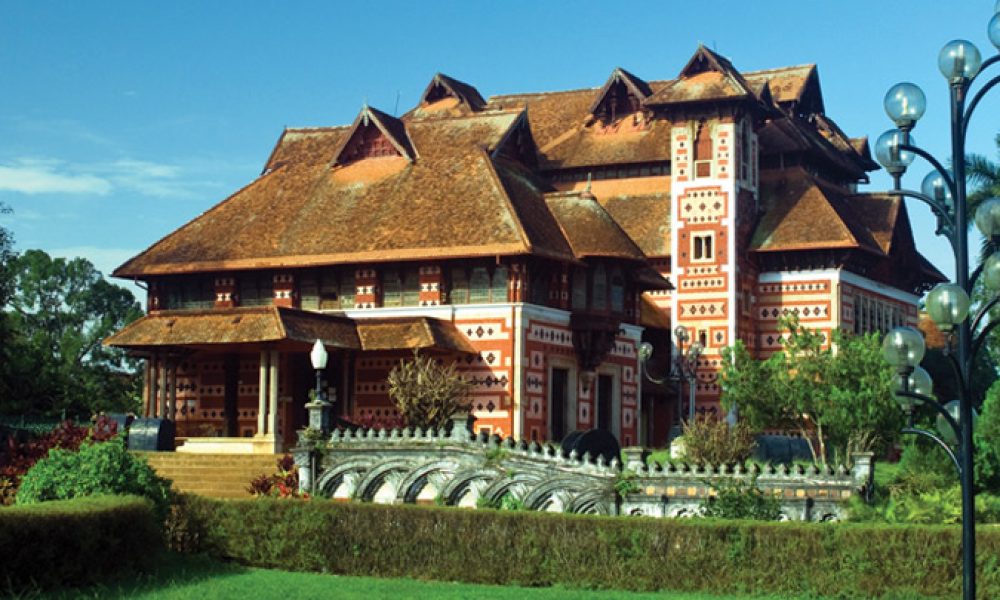
In the Museum complex, which is in the middle of Thiruvananthapuram city, you can find the large Napier Museum and the Natural History Museum. The Zoological Park, the Art Museum, the Art Gallery, the Sree Chithra Enclave, the KCS Panicker Gallery, the Aquarium, and the 3D Theatre are all part of the museum complex.
It was built in the 19th century and has its own cooling system that comes from the sun. It has a lot of old things in it, like bronze statues, old jewellery, a temple chariot, and ivory paintings. People are especially amazed by the Japanese shadow-play leather that is used to show scenes from the Mahabharata and Ramayana.
Here, you can see all of Kerala’s rich culture history. The museum was named for John Napier, who used to be the Governor General of Madras. The building is a mix of styles from the Indian, Chinese, Kerala, and Mughal Schools of Architecture. It is also known as the Government Art Museum.
Shangumugham beach
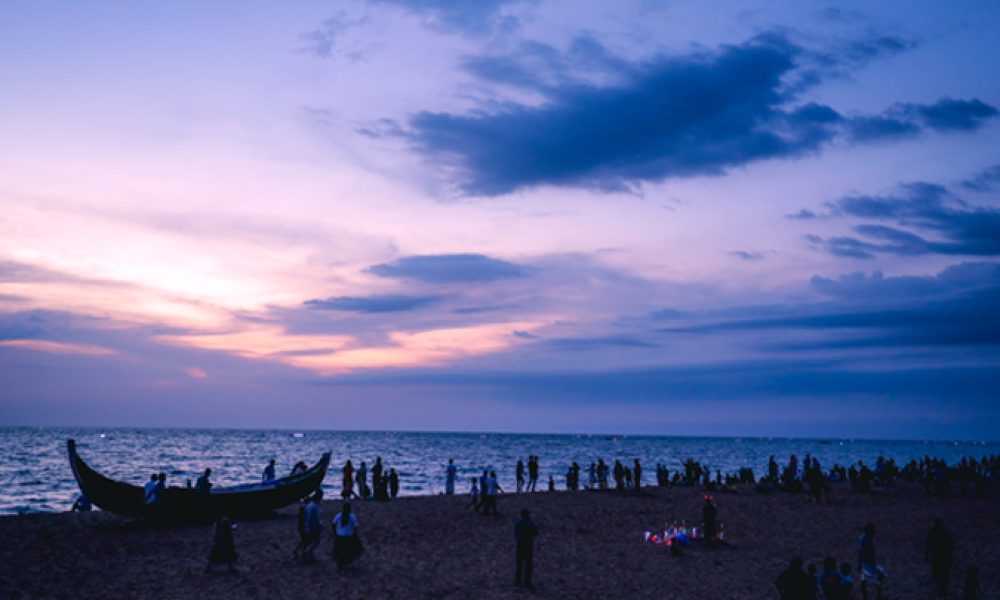
Shanghumugham Beach is a well-known beach in Trivandrum. It is about 10 km from Trivandrum Central Railway Station. It is a popular beach in Kerala and one of the best things to do in Trivandrum.
Shanghumukham Beach is known for its clear seas and beautiful sunsets. It goes by the Trivandrum airport and is a must-see for people who want to find peace and quiet when they visit Trivandrum. The famous artist Sri Kanai Kunjuraman made a huge sculpture of a Nymph (Jalakanyaka), and there is also a restaurant in the shape of a starfish.
Shanghumugham Beach is known as the ‘Arattukadavu’ of Sri Ananthapadmanabhan, the city’s main god. On the Arattu day in Thiruvananthapuram, images of Lord Padmanabhaswamy, Lord Narasimha, and Lord Krishna are taken in a parade to the Sea at Shanghumugham Beach. After the ritual bath at Shanghumugham, the event comes to an end when the images are brought back in a procession. His Highness, the new Maharaja of Travancore, will lead the parade with the royal sword. He will be followed by members of the royal family, armed guards, temple officials, mounted police, and officers.
On weekends and local holidays, there are more people at the beach. The sunset is beautiful at this beach. Children come to this area to visit the Chacha Nehru Traffic Training Park, which helps them learn the rules of the road.
Kuthiramalika
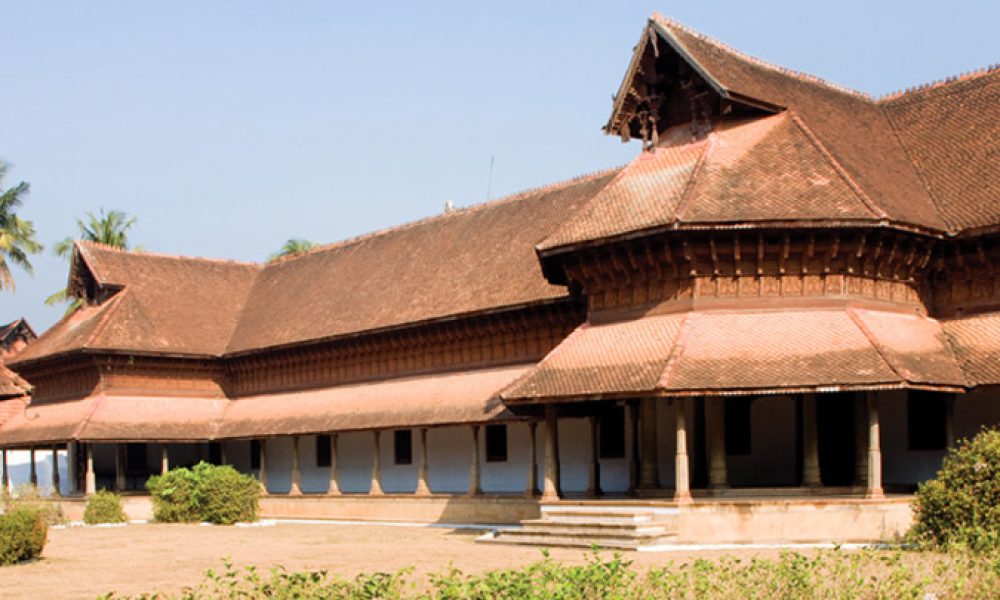
When you go to “Kuthiramalika,” which means “palace of horses,” you can see 122 wooden horses that are all happy. It used to be called the Kuthiramalika house Museum or the Puthenmalika Palace Museum. It is a two-story house in Thiruvananthapuram close to the Sree Padmanabhaswamy Temple. It was built in the 1840s by Swathi Thirunal Balarama Varma, who was the Maharaja of the Kingdom of Travancore in British India at the time.
It is a great example of the Kerala school of building and is made of teakwood, rosewood, marble, and granite. The museum has statues and gods made out of white marble, as well as Kathakali figures, paintings, and mirrors from Belgium. Because of the thriving spice trade between Kerala and the rest of the world, it was possible to get these things.
Even here, people love to walk around barefoot. It’s a trip to another time that’s hidden in the State’s capital. The local guides give you an in-depth look at the palace’s many secret wonders, which are sure to amaze you.
Thiruvananthapuram Restaurants
Foodies can try every kind of hot vegetarian or non-vegetarian dish in the land of spices. They can eat a traditional spread of hot coconut curries on a banana leaf, grab a quick meal at a restaurant on the side of the road, or snack on salty foods on the beach. People who like seafood can eat as much fish, crab, mussels, or shrimp as they want, curried or fried. Thiruvananthapuram also has many other kinds of food, like North Indian, Chinese, Continental, and fast food, to meet different tastes. Most restaurants are in the middle of the city or near the most famous beaches.
Thiruvananthapuram shopping
In Thiruvananthapuram, shopping is fun because there are so many different kinds of arts and textiles. As gifts to take home, tourists can buy wood, metal, and coir items that are unique to Kerala and sold all over the city. Several shopping centres sell a wide variety of market goods.
Getting to Thiruvananthapuram
You can easily get to Thiruvananthapuram by car, train, or plane. The city is connected to Kanyakumari, Kochi, Kozhikode, Mangalore, and Mumbai by NH 66, which goes through it. Indian Railways connects the city to other big cities in the rest of the country, such as Bengaluru, Chennai, Hyderabad, Mumbai, Delhi, and Dibrugarh. At Thiruvananthapuram International Airport, you can get flights from cities and countries like Singapore, the Maldives, Sri Lanka, and Dubai.